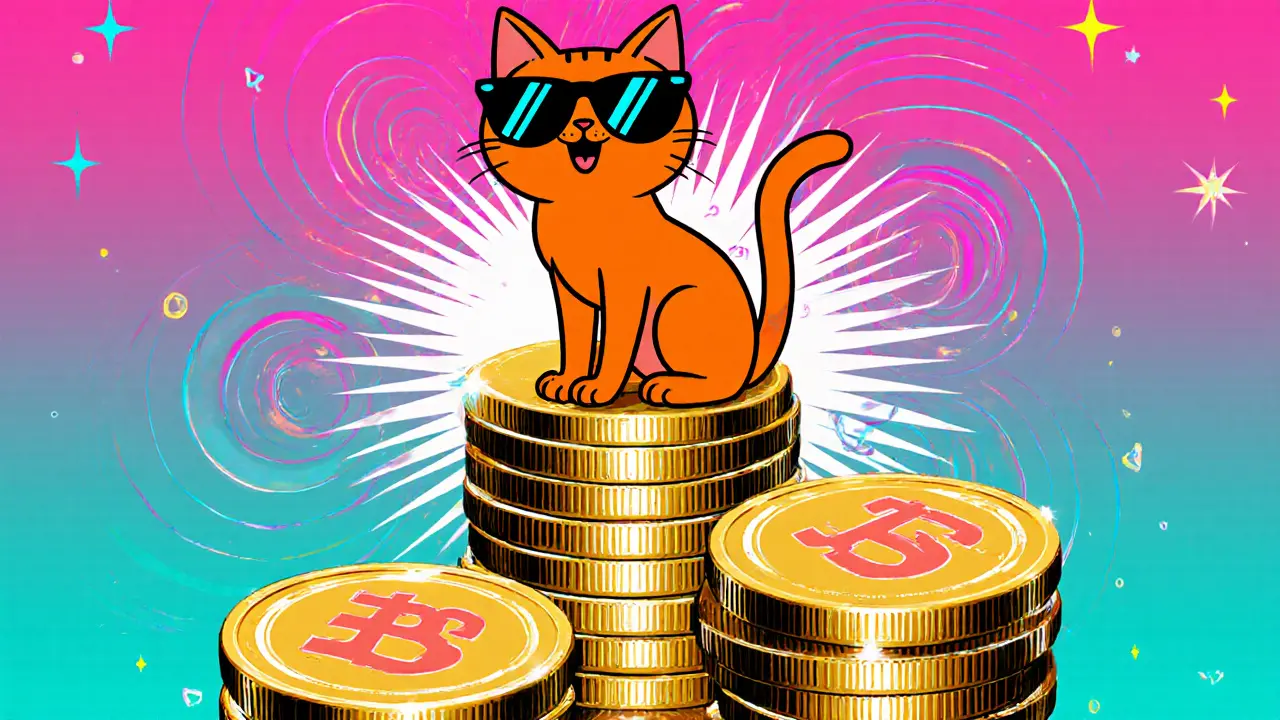CAT Token – What It Is, How It Works & Where to Find It
When you hear about CAT token, a utility‑driven cryptocurrency that powers the CatChain ecosystem. Also known as CAT, it serves as both a governance token and a reward mechanism for participants across the network.
The token often appears in airdrop, a promotional distribution of free tokens to eligible wallets campaigns that aim to bootstrap community growth. Those airdrops can boost early adoption, but they also create short‑term price swings that traders need to watch. At the same time, crypto exchange, a platform where digital assets are bought, sold or swapped listings determine how easily users can move CAT token in and out of their portfolios. A listing on a reputable exchange often signals a level of security and liquidity that hypes up the token’s market presence.
Key Aspects of CAT Token
Understanding tokenomics, the economic model that defines supply, distribution and incentive structures of a cryptocurrency is crucial. CAT token features a capped total supply of 100 million, with 40 % allocated to community incentives, 30 % to staking rewards, 20 % to development funds, and 10 % reserved for strategic partnerships. Staking enables holders to lock up their tokens in return for a share of transaction fees, which ties the token’s health directly to network activity. This design links CAT token to Decentralized Finance, financial services built on blockchain that operate without traditional intermediaries protocols, allowing it to be used as collateral, liquidity provider, or yield‑farmer in various DeFi apps.
From a practical standpoint, the token’s utility expands as more DeFi projects integrate CAT for governance votes and fee discounts. When a DAO proposes a protocol upgrade, CAT holders can cast votes proportional to their stake, giving the community a direct say in the roadmap. This governance layer creates a feedback loop: active participation improves the platform, which in turn attracts more users, enhancing token demand. The loop illustrates a core semantic triple: CAT token encompasses tokenomics that include staking rewards, and staking rewards influence DeFi participation. Together, these relationships shape the token’s long‑term value proposition.
Security and compliance also play a role. Exchanges that list CAT token must perform due diligence, checking the project’s smart‑contract audits, team background, and compliance with regional regulations such as MiCAR or the U.S. Treasury’s guidance on crypto assets. A clean audit report reduces the risk of exploits, while regulatory clarity reassures institutional investors. This creates another semantic link: crypto exchange requires compliance checks, which affects CAT token’s market reputation. As a result, traders often monitor both audit status reports and exchange announcements to time their entry or exit points.
For newcomers, the first steps usually involve claiming any ongoing CAT token airdrops, setting up a compatible wallet, and then transferring the tokens to a low‑fee exchange for trading or to a staking platform to start earning rewards. The process is straightforward: connect your wallet, verify eligibility, claim the tokens, and then follow the platform’s staking guide. Each stage introduces a new touchpoint—airdrop, exchange, DeFi—highlighting how interconnected the ecosystem truly is.
Below you’ll find a curated set of articles that dig deeper into each of these facets. Whether you’re hunting for the latest CAT token airdrop guide, comparing exchange fees, or learning how to maximize DeFi yields with CAT, the collection offers practical tips, risk assessments, and step‑by‑step instructions to help you navigate the space confidently.
What Is TOP CAT (CAT) Crypto Coin? Complete Breakdown
A clear, up‑to‑date guide explains what TOP CAT (CAT) crypto coin is, its variants, market data, risks, and how it stacks up against other cat‑themed tokens.
